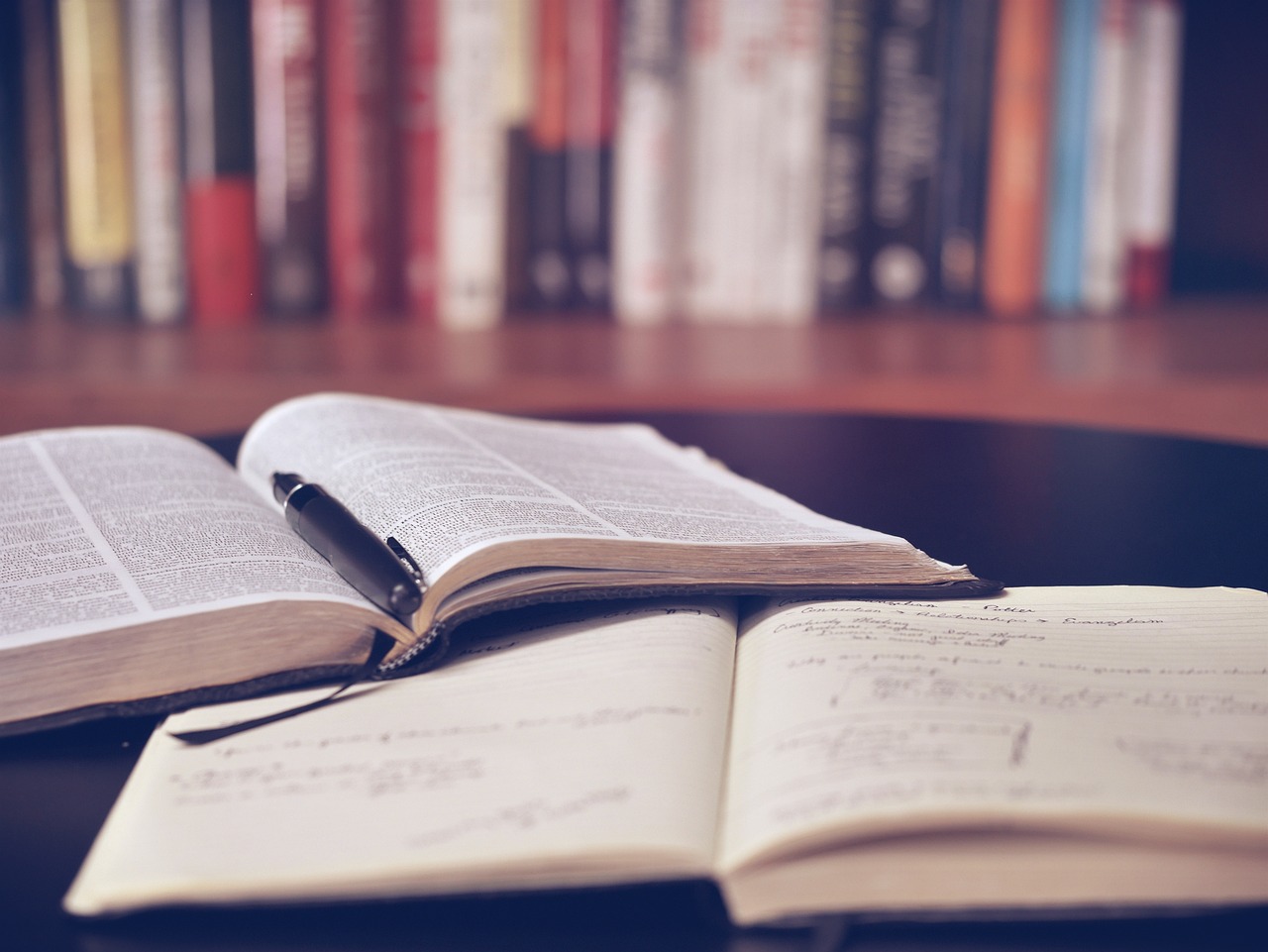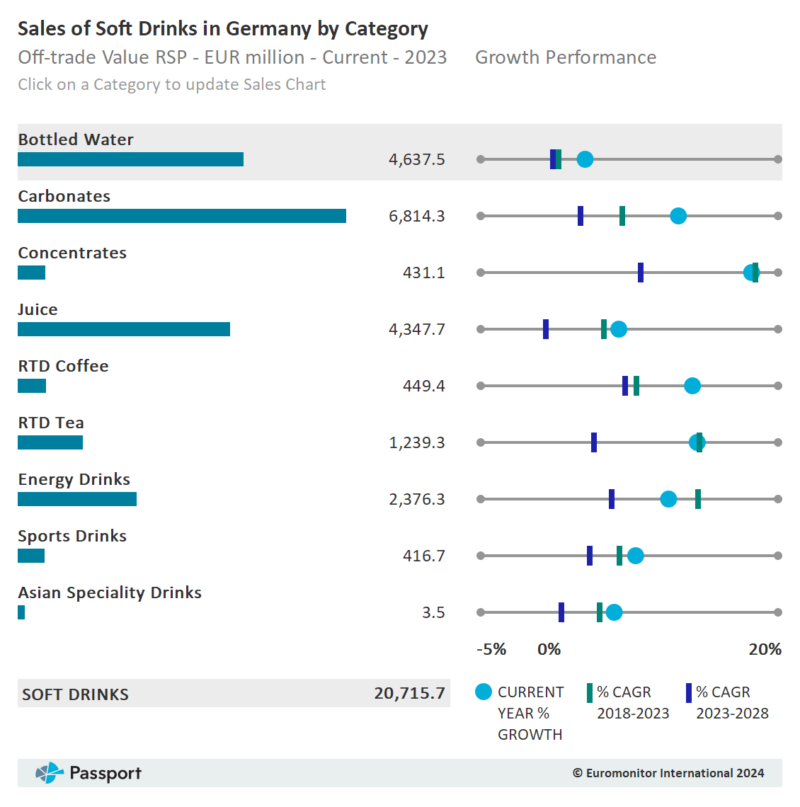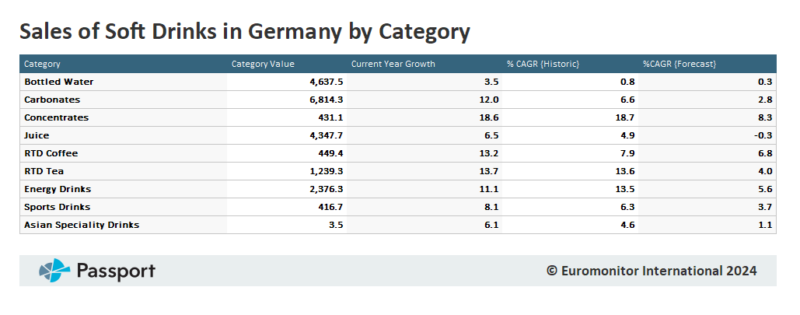How do I reference… images, figures, and tables in the APA7 style?
11/04/2024

So you want to use an image or table in your assignment that you didn’t create yourself – but you don’t know how to cite it? Read on to find out how.
Any images, figures, graphs or tables that you copy from another author or creator need to be labelled with a title that describes what they show, along with an in-text citation indicating their source and, at the end of your work, a corresponding reference for that source. If the source has page numbers, these should be included, just like in a citation for a direct quotation. See our examples below…
Citing an image or chart:
This datagraphic comes from Euromonitor’s Passport database.

Source: Euromonitor, 2024.
In text citations:
Parenthetical citation:
Carbonates account for the highest value sales in the German soft drinks market (Euromonitor, 2024), with bottled water as the second largest segment…
Narrative citation:
Euromonitor (2024) list carbonates as the best performing segment in the German soft drinks market.
Reference:
Remember too that you will need to include the appropriate reference in your bibliography / reference list. For the example above, in the APA7 style, the reference would look like this:
Euromonitor (2024, January). Soft drinks in Germany. Passport. https://www.portal.euromonitor.com/
Citing Tables:
This soft drinks data is also available in table form within the same Passport report. So, if you were going to copy the table into your work, we treat it in exactly the same way.

Source: Euromonitor, 2024.
In text citations:
Parenthetical citation:
Sales of carbonates, bottled water and juice account for over 75% of sales in the German soft drinks market (Euromonitor, 2024).
Narrative citation:
According to Euromonitor (2024), sales of carbonates, bottled water and juice are worth over 75% of the German soft drinks market.
Reference:
The full APA7 reference would again be:
Euromonitor (2024, January). Soft drinks in Germany. Passport. https://www.portal.euromonitor.com/
Adaptations:
If you have taken data in any form from another resource and developed or adapted it in some way, then you can indicate this in your in-text citation by adding the phrase ‘adapted from’ in the description of the figure. This would cover adding a new column of data from another source to an existing data table or perhaps using data you have downloaded to create your own chart. See below for an example of an author doing this.
The example below has been taken from p28 of the following book:
Fry, H., Ketteridge, S. & Marshall, S. (Eds.). (2015). A handbook for teaching and learning in higher education: Enhancing academic practice (4th ed.). Routledge.

In text citations:
Parenthetical citation:
Non-EU enrolments in UK universities increased gradually between 2002 and 2012 (International Unit, 2013a).
Narrative citation:
International Unit (2013a) data demonstrates a gradual rise in non-EU enrolments in UK universities between 2002 and 2012.
Reference:
Always remember to include the full bibliographic reference for all the sources that you use in your reference list. In this case, Fry et al. include the following reference in their bibliography (adapted to the APA7 referencing style by the author of this post):
International Unit. (2013a). International Higher Education in Facts and Figures, Autumn. Retrieved February 14, 2014, from http://www.international.ac.uk/media/2416084/intfacts2013.pdf
Please note: Cranfield supports two different referencing styles – APA7 (Author-date) and Numbered (NLM). Please make sure you use the style preferred by your supervisor or lecturer. The advice above relates only to the APA7 style. If you have any questions about referencing, please contact the Library.
Feature image from Pixabay. Available at https://cdn.pixabay.com/photo/2016/06/01/06/26/open-book-1428428_960_720.jpg
Categories & Tags:
Leave a comment on this post:
You might also like…
Keren Tuv: My Cranfield experience studying Renewable Energy
Hello, my name is Keren, I am from London, UK, and I am studying Renewable Energy MSc. My journey to discovering Cranfield University began when I first decided to return to academia to pursue ...
3D Metal Manufacturing in space: A look into the future
David Rico Sierra, Research Fellow in Additive Manufacturing, was recently involved in an exciting project to manufacture parts using 3D printers in space. Here he reflects on his time working with Airbus in Toulouse… ...
A Legacy of Courage: From India to Britain, Three Generations Find Their Home
My story begins with my grandfather, who plucked up the courage to travel aboard at the age of 22 and start a new life in the UK. I don’t think he would have thought that ...
Cranfield to JLR: mastering mechatronics for a dream career
My name is Jerin Tom, and in 2023 I graduated from Cranfield with an MSc in Automotive Mechatronics. Originally from India, I've always been fascinated by the world of automobiles. Why Cranfield and the ...
Bringing the vision of advanced air mobility closer to reality
Experts at Cranfield University led by Professor Antonios Tsourdos, Head of the Autonomous and Cyber-Physical Systems Centre, are part of the Air Mobility Ecosystem Consortium (AMEC), which aims to demonstrate the commercial and operational ...
Using grey literature in your research: A short guide
As you research and write your thesis, you might come across, or be looking for, ‘grey literature’. This is quite simply material that is either unpublished, or published but not in a commercial form. Types ...






